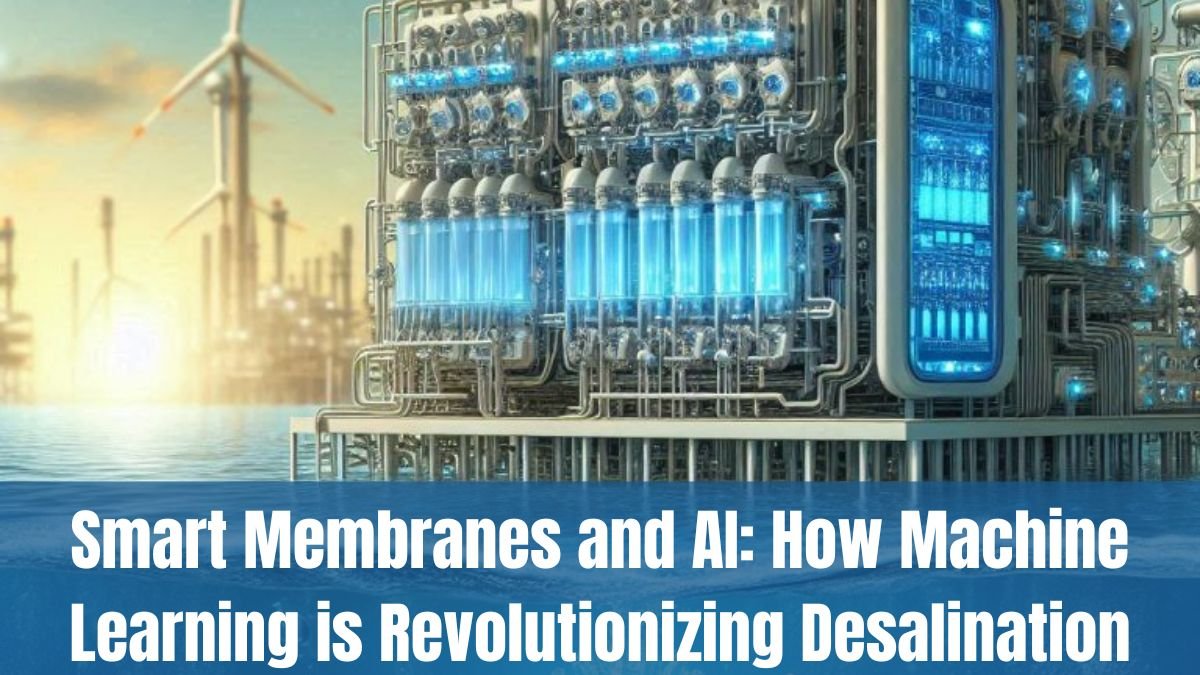Water scarcity has now become a serious global crisis across the world. The demand for clean and potable water is increasing every day due to growing population, industrialization and climate change. Scientists and engineers are constantly searching for new Membranes and more effective ways to find a solution to this challenge. In this context, smart membrane technology and artificial intelligence (AI)-based machine learning have started to revolutionize the field of desalination and water purification.
In this article, we will understand in detail what smart membranes are, what is the role of machine learning in desalination, and how this technology can affect water supply and energy consumption in the future.
Desalination and current challenges
Desalination, or the process of converting sea and brackish water into potable water, has become an important need in many parts of the world today.
Although this technology has been around for ages, it faces several challenges:
- High energy consumption: Traditional reverse osmosis (RO) and thermal desalination require a lot of energy.
- Membrane fouling: Minerals, bacteria, and other contaminants accumulate on membranes over time, reducing their efficiency.
- High maintenance costs: Frequent replacement or cleaning of membranes is costly.
- Limited efficiency: Traditional membranes are not always fully effective due to salinity and the variety of solutes present in water.
- To address these challenges, scientists started developing smart membranes and AI-based desalination systems.
What are smart membranes?
Smart membranes are advanced filtration systems that not only purify water but also have the ability to automatically respond and adjust themselves according to the conditions.
Key features of smart membranes:
- Fouling detection: Smart membranes are equipped with sensors that can instantly detect when deposits (fouls) are accumulating on the membrane.
- Adjustable porosity: The size and structure of the membrane pores can change depending on the quality of the water.
- Continuous monitoring and data collection: Sensors continuously collect data on the chemical and physical properties of water.
- Automatic cleaning: Some smart membranes have self-cleaning technology, which increases the life of the membrane
- Due to these features, smart membranes are more energy-efficient, durable and reliable than traditional desalination systems.
Contribution of machine learning in desalination
The main purpose of machine learning and artificial intelligence is to make better decisions by analyzing data. When applied to desalination systems, it improves many important areas.
Reducing energy consumption
Machine learning algorithms can analyze water quality, salinity, and flow rate data to determine how much energy is needed in the desalination process. This can optimize pumping and filtration processes.
Increasing membrane life
Membrane fouling can be predicted using data analytics and machine learning. For example:
If the algorithm detects a sudden increase in salinity, the system can automatically reduce pressure This helps continue operations without damaging the membrane.
Automated operations
AI-based control systems reduce the need for manual intervention. This is especially useful in large cities and industrial desalination plants, where constant monitoring is difficult.
Benefits of Smart Membranes and AI
The combination of smart membranes and machine learning brings many benefits in desalination:
- Energy efficiency improvement: Reduction in energy consumption by about 20–30% is possible
- Water quality improvement: Ions and other unwanted elements from water can be removed more effectively
- Reduction in maintenance costs: Automatic monitoring and fouling detection increases the life of the membran
- Positive impact on the environment: Less energy use and less chemical cleaning means a lower carbon footprint
- Continuous data and decision support: Operators can constantly see real-time data and make the right decisions.
Examples of Smart Membranes
Some advanced technologies and companies are already developing AI-enabled desalination systems. Examples:
- Graphene-based membranes: Graphene is being used to make water and ion separation more efficient in membranes.
- Nanomaterials: Nano-structured membranes are effective for higher water flow rates and reduced fouling.
- IoT-enabled plants: The entire desalination plant can be smartly controlled through sensors and cloud data analytics.
- These examples make it clear that smart membranes are not just a futuristic idea but a rapidly adopted technology even in the present.
Future Directions
The future may see further improvements in desalination and water management by combining smart membranes and AI:
- Autonomous desalination systems: Fully automated and AI-controlled plants that can function without human intervention.
- Customized membranes: Special membrane designs for different water types and salinities.
- Real-time monitoring networks: Monitoring water quality and supply across an entire city or region.
- Sustainable and green technology: Energy-efficient and eco-friendly desalination solutions.
- Continuous research and investment in this direction will help tackle water scarcity across the world in the coming years.
Conclusion
Smart membranes and AI-based machine learning have revolutionized the field of desalination and water purification. These technologies not only save energy and cost but also improve water quality and membrane life.
As the demand for water increases across the world, smart and AI-enabled desalination systems will play a vital role in providing sustainable, efficient and eco-friendly solutions.
In the future, the widespread adoption of these technologies will not only ensure water security but also help mitigate water crisis.
